blog
Book Review: Thirty-Six Views of the Golden Gate Bridge by Arthur Drooker
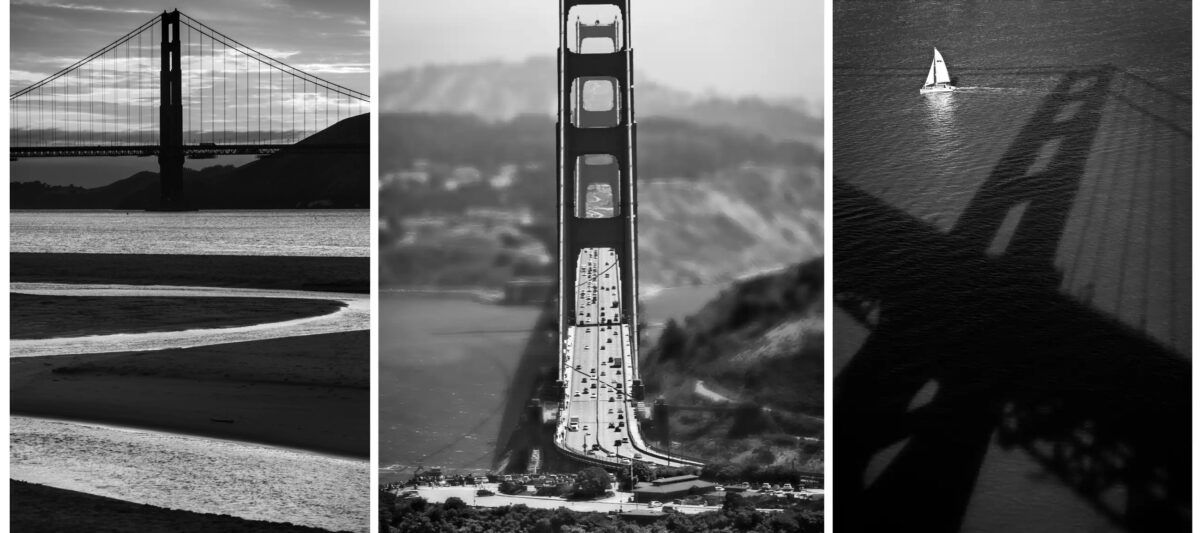
from ‘Thirty-Six Views of the Golden Gate Bridge’ © Arthur Drooker
A foundational quote from Joseph Strauss, the Golden Gate’s visionary chief engineer, in part gave Arthur Drooker inspiration in his project and resulting book, Thirty-Six Views of the Golden Gate Bridge. Strauss said, “Our world today revolves completely around things which at one time couldn’t be done because they were supposedly beyond the limits of human endeavor. Don’t be afraid to dream.” This sentiment, a testament to human ambition and the courage to strive beyond perceived limitations, is a tall order for a photographic project and serves as a powerful springboard indeed.
Inspired by Katsushika Hokusai’s seminal “Thirty-Six Views of Mount Fuji,” Drooker embarks on a similar pilgrimage, not to envision a sacred mountain, but to an equally iconic structure: San Francisco’s majestic Golden Gate Bridge. Drooker asked himself: Is it possible to see the most photographed bridge in the world anew? He followed three rules for the project: make no postcard shots; make only black and white photos to emphasize the bridge’s fabled form; and lastly, make photos from unusual vantage points that place the bridge in context with its environment. In doing so, he doesn’t merely emulate Hokusai; he engages in a profound act of visual re-evaluation, daring to dream of seeing the most photographed bridge in the world anew.
Drooker’s endeavor might initially seem like a fool’s errand. What more can be visually said about this iconic structure? Yet it is precisely within this perceived limitation that Drooker finds his beginnings. True seeing transcends mere recognition; it demands a stripping away of preconceived notions, a deliberate act of defamiliarization. Plus his self-imposed rules are deliberate tools to draw forth a deeper, more nuanced understanding of this enduring symbol.
Drooker and Hokusai are separated by nearly two centuries and vastly different cultural landscapes, yet they share a fundamental curiosity about how a single, significant subject can be revealed through a multitude of perspectives. Hokusai’s Fuji, viewed from bustling marketplaces, tranquil lakeshores, and amidst the raw power of nature (who doesn’t immediately recognize Hokusai’s “The Great Wave”), becomes a multifaceted entity, its symbolic weight amplified by its diverse visual representations. Similarly, Drooker seeks to unravel the layers of meaning embedded within the Golden Gate, moving beyond its purely architectural significance to explore its relationship with the city, the surrounding landscape, and the very atmosphere that enshrouds it.
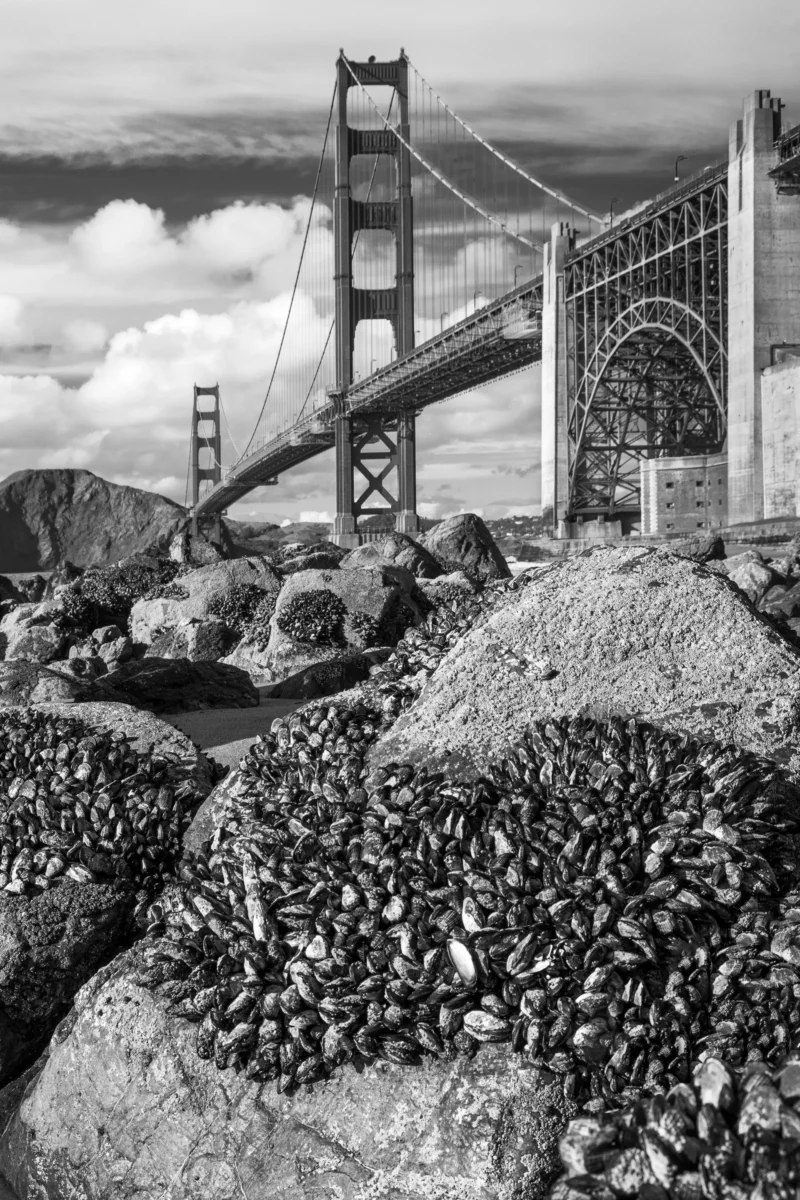
Marshall’s Beach © Arthur Drooker
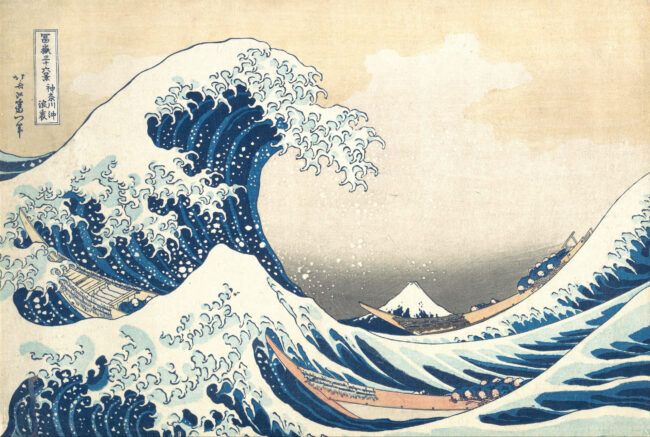
Katsushika Hokusai, The Great Wave off Kanagawa, 1831, Ukiyo-e (Woodblock print)
Drooker’s choice to work exclusively in black and white is a crucial element in this pursuit of essence. By stripping away the seductive allure of color, he forces the viewer to confront the bridge’s fundamental form, its intricate network of cables and soaring towers. The stark contrasts and subtle gradations of tone emphasize the play of light and shadow, revealing the bridge’s sculptural qualities, perhaps with newfound clarity. In a world saturated with vibrant digital imagery, this monochromatic approach lends itself to a deliberate act of abstraction, inviting contemplation on the structure’s inherent geometry and its interaction with its environment.
Drooker guides us through the periphery, offering glimpses of the bridge framed by chimneys, vent pipes and streetlamps. He peeks through dense foliage, or reveals the bridge by its reflection or shadow. A small white sail glides past the bridge in the bay that leads to the Pacific. These are not the images that adorn tourist brochures or postcards, but rather photographs that invite a more thoughtful engagement. They encourage us to consider the bridge not as an isolated monument, but as an integral part of the environment. After photographing the Golden Gate Bridge intensively for two years, Drooker says he indeed came to see it anew. “What I found most impressive,” says Drooker, “even more than the span’s status as an engineering and architectural icon, is its power as a symbol of possibility.”
This is not merely a personal revelation; it is an invitation for the viewer to share in this renewed vision. His photographs transcend documentation; they become meditations on the bridge’s symbolic power, its capacity to evoke a sense of possibility. The bridge itself overcame seemingly insurmountable engineering challenges when it was built in the 1930s, stretching across a formidable expanse of the bay, and so Drooker’s project embodies a similar spirit of overcoming visual clichés to reveal something profound.
Consider, for instance, a photograph that might depict the base of one of the towers, its immense scale dwarfing the surrounding human activity. Or perhaps an image that captures the intricate dance of light and shadow beneath the roadway, revealing the complex underbelly of this seemingly monolithic structure. Drooker’s lens might linger on the weathered texture of the steel, the rhythmic repetition of the suspension cables, or the way the fog interacts with the bridge’s form, obscuring and revealing in equal measure. These are the details that often escape the casual observer, the nuances that speak to the bridge’s history, its engineering marvel, and its constant dialogue with the natural world.
An artist’s unique perspective can transform a familiar subject. Drooker’s “Thirty-Six Views” is a powerful testament to this transformative power. It demonstrates that even the most iconic and over-photographed subject can yield new and compelling insights when approached with intention, curiosity, and a willingness to look beyond the surface. It’s a reminder that the act of seeing is not passive but active, a process of engagement and discovery.
The project, therefore, becomes more than just a limited series of photographs; it is an exercise in visual philosophy. It asks us to consider how we look at the world around us, how easily we settle for familiar representations, and the potential for discovery that lies in challenging those ingrained perceptions. Drooker’s work serves as a wonderful and reinforcing reminder that even the most familiar can be seen anew if we approach it with fresh eyes and a willingness to embrace unconventional perspectives.
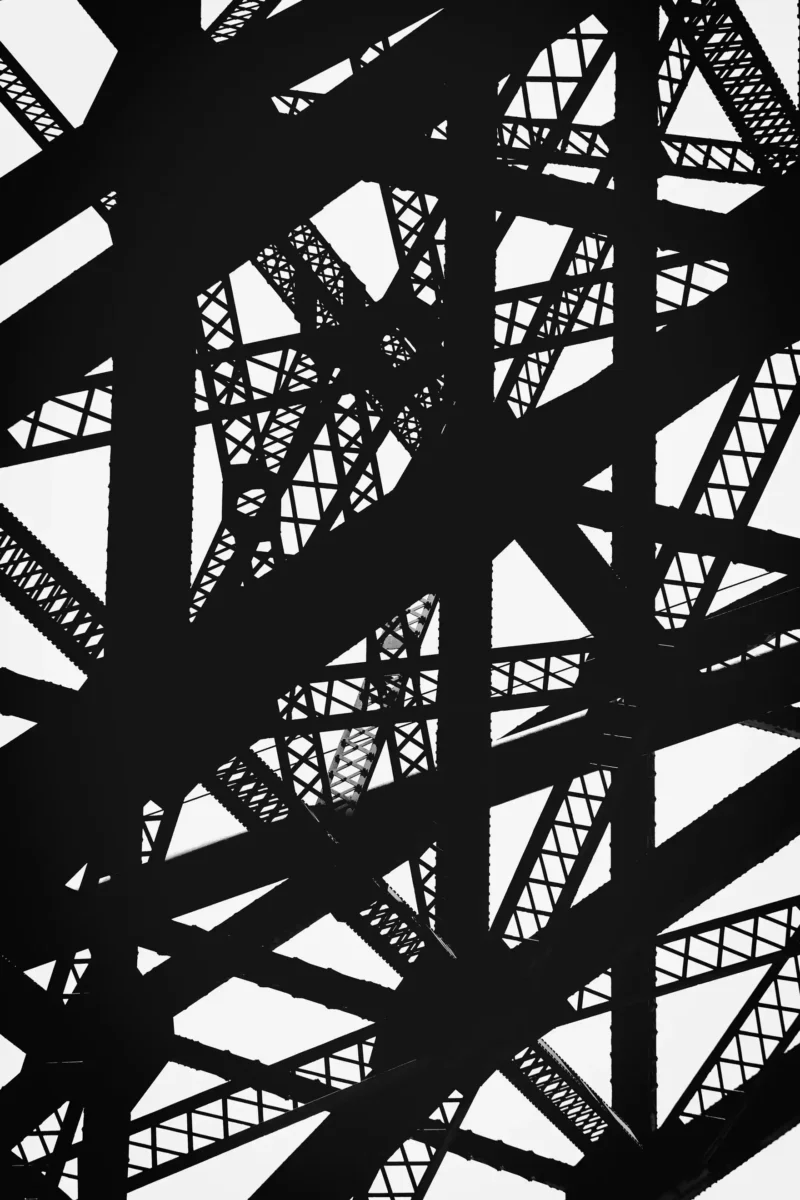
Cat’s Cradle © Arthur Drooker
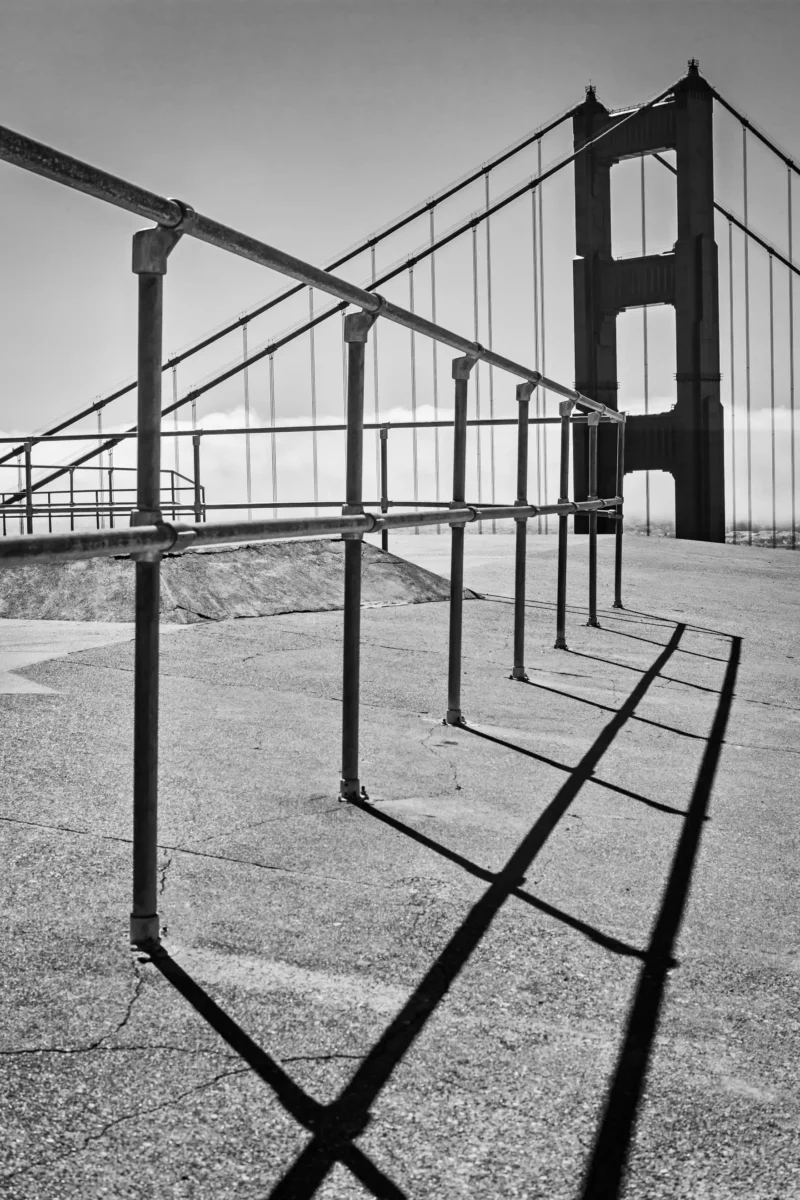
Battery Spencer © Arthur Drooker
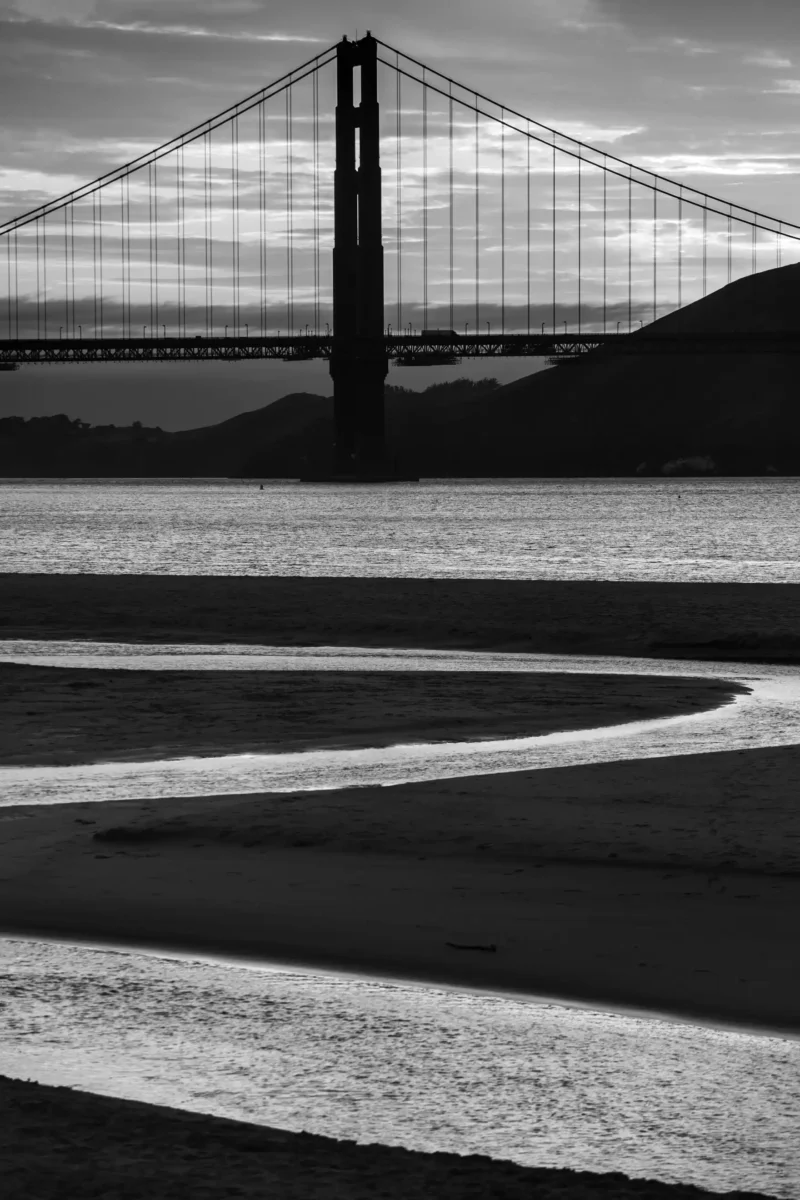
East Beach © Arthur Drooker

Love Locks © Arthur Drooker
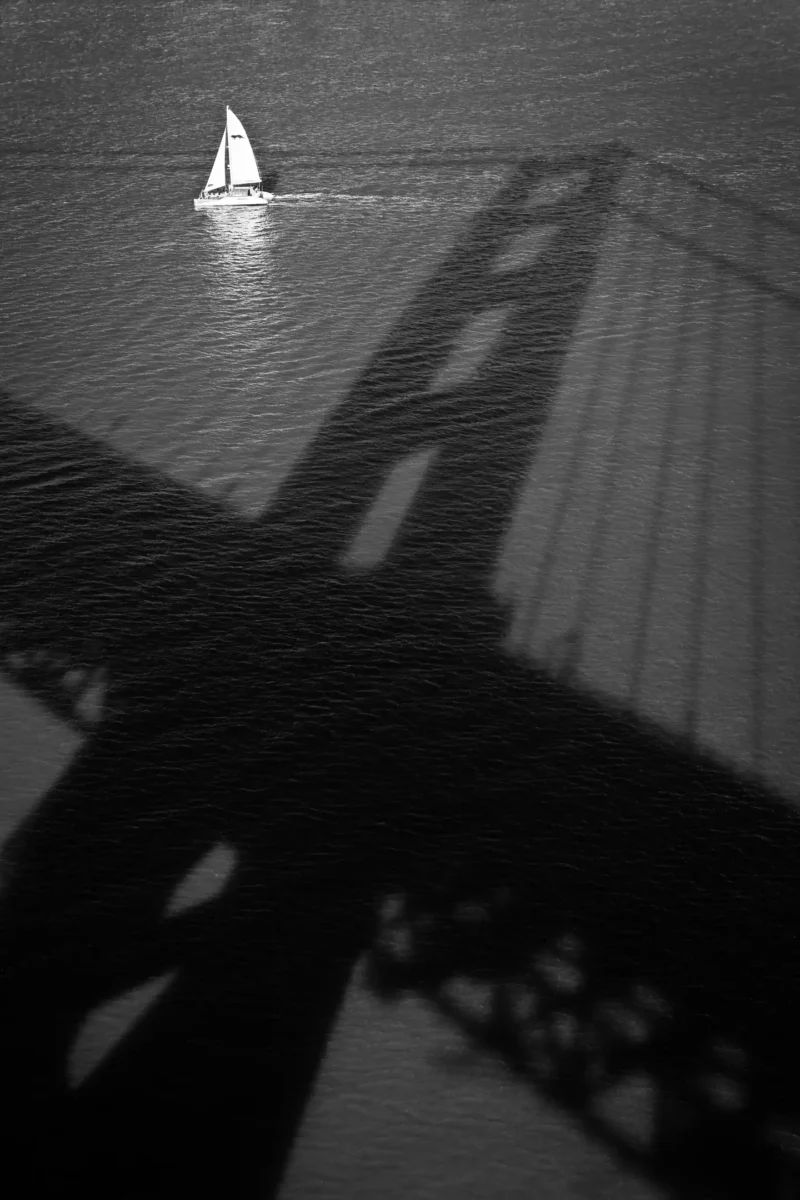
Sailing the South Tower © Arthur Drooker
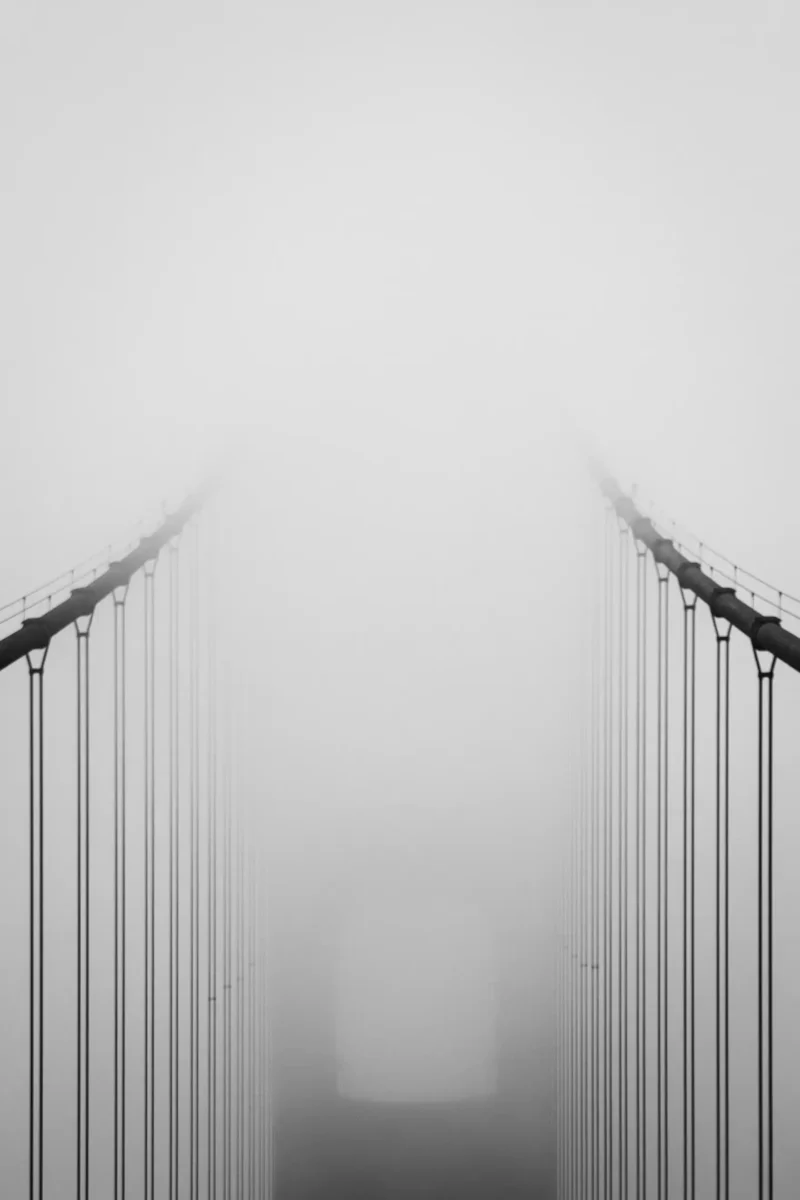
Leaving Fog City © Arthur Drooker
::
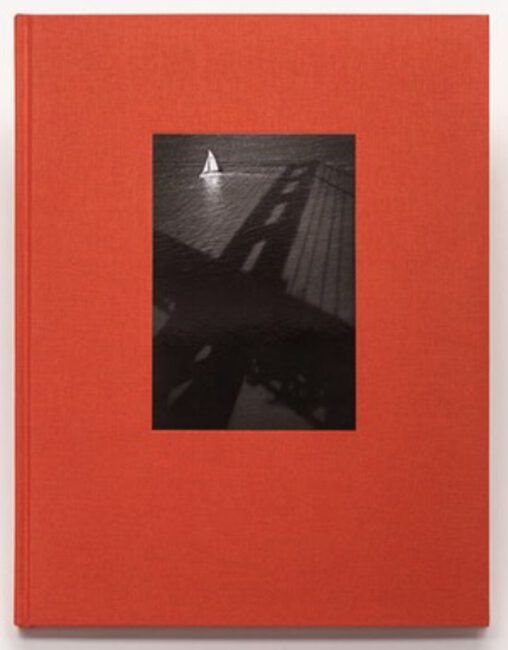
Thirty-Six Views of the Golden Gate Bridge by Arthur Drooker
Hardcover, 80 pages/ 9” x 12” (first edition limited to 100 copies)
Publisher: Arthur Drooker (2024)
Essay: Gary Kamiya
ISBN: 979-8-218-49266-3
::
Arthur Drooker is the author and photographer of Light on the Land (Self Published, 2024), Twilight (Self Published, 2024), City Hall (Sciffer, 2021), and Conventional Wisdom (Glitterati, 2016. His work has been the subject of a feature story on CBS Sunday Morning and has been exhibited at the Virginia Center for Architecture, the Louisiana Art and Science Museum, the Wichita Museum of Art, and the Art Museum of the Americas in Washington, D.C., among other institutions. A Phi Beta Kappa graduate from the University of Pennsylvania with a degree in American Civilization, Drooker imbues his photography with an understanding of and appreciation for cultures past and present.
Location: Online Type: Book Review
Events by Location
Post Categories
Tags
- Abstract
- Alternative process
- Architecture
- Archives
- Artist residency
- Artist Talk
- Biennial
- Black and White
- Book Fair
- Car culture
- Charity
- Childhood
- Children
- Cities
- Collaboration
- Community
- Cyanotype
- Documentary
- Environment
- Event
- Exhibition
- Faith
- Family
- Fashion
- Festival
- Film Review
- Food
- Friendship
- FStop20th
- Gender
- Gun Culture
- Habitat
- home
- journal
- Landscapes
- Lecture
- Love
- Masculinity
- Mental Health
- Migration
- Museums
- Music
- Nature
- Night
- nuclear
- Photomontage
- Plants
- Podcast
- Portraits
- Prairies
- Religion
- River
- Still Life
- Street Photography
- Tourism
- UFO
- Water
- Zine

Leave a Reply